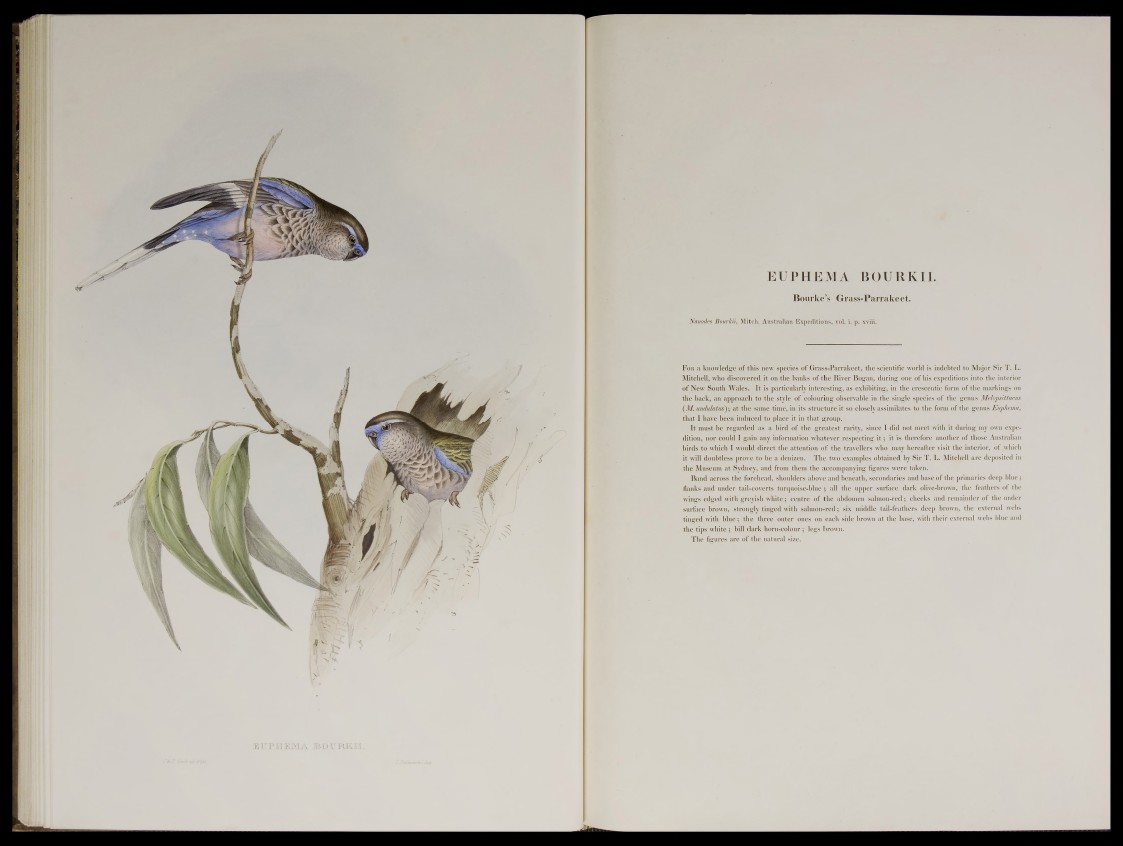
EUPHEMA BOURKII.
Jiourki,\ (Ji .is— l*.iiFcikect.
Nanodes Bourkiii xviii.
F ob a knowledge of this new species of Grass-Parrakee%-the scientific world is indebted to Major S ir '|^ ^ >
Mitchell, whp dis covered ^ p n the hanks of the River Bogan, during one of his expeditions into the interior
of NfeJpiJ;h, Wales. Itlisipartfcularlv*interesting, as e^brtijog, * in the crespentic form of the markings on
the back, an approach, to*tbe style ^ ^ cm ^ ^ ^ ^ o h s e iw^DTe^.iMme singlb species of the genus Melopsittacus
(M. undulatus) ; at the sa^j»Hme, in its structure it so closely assi^ilgt^^^the- form of the genus Euphema,
that I have been inqupecl^^^ group.
It must be regarded a^cj^ibird of the greatest rarity, sincj^BdadMotmePf|ml@i# during my own expe-
dition, dor could I gain any information whatever respecting i t ; it is therefore another of those Australian
birds tp which I would direct the attention of the travellers who may hereafter visit the interior, of which
^^wilhilouhtless prove to be a denizen. The two%xamgles;obtained Mitchell are deposited in
the Museum at Sydney, and from them the accompanying figures were taken.
Band across the forehead, shoulders above and beneath, secondaries and base of^the primaries deep blue;
flanks and undfin4all-eQM ^ I^M ^Qil,pbmei^ij:^^tlxe^hper surface dark, olive-brown, the feathers bf the
w in g s^ e d g p% w i|!|lg ^ ^ ^ ^ ite ;, centre" p$ die abdomen salmon-red; cheeks and1 remainder of the under
surface brown, strongly tinged with salmon-red; tail-feathers deep j®p^m, the external webs
djipged with blue; the three outer ones on each side %owh at the base, with their’external webs blue and
the tips white; bill dark horn-colour; legs brown.
The figures are of the natural size.